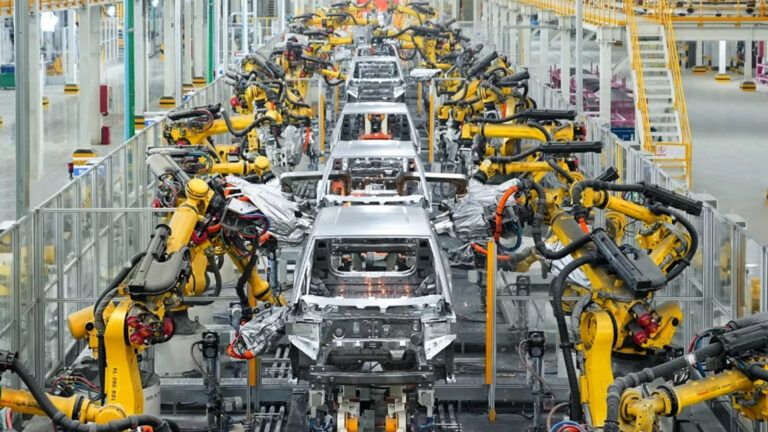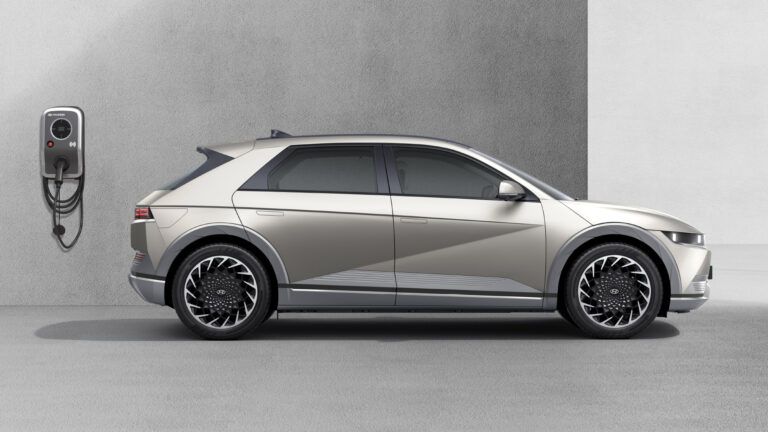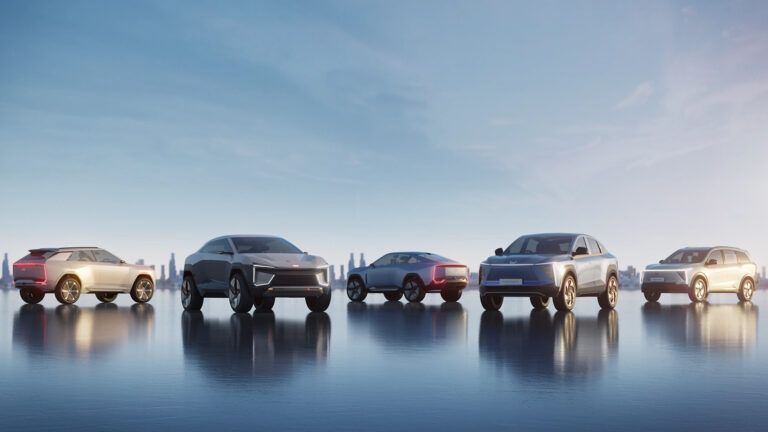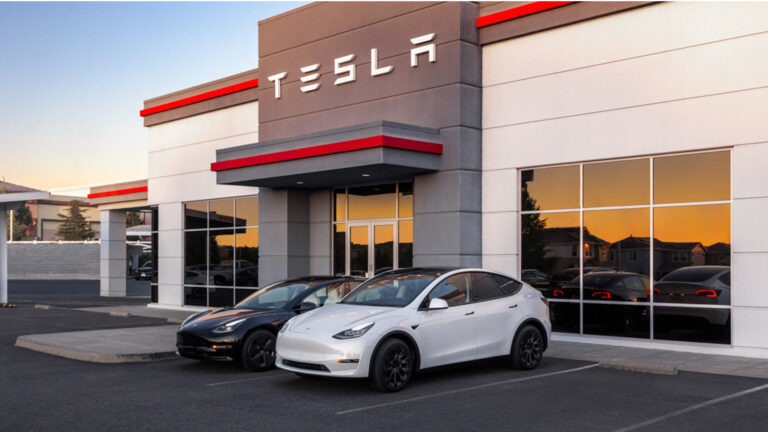Audi has come out with a whole new fleet of performance electric cars under the Audi A6 and the Audi S6 monikers. Among the lot is an A6 Sportback e-tron, which the company is deeming to be “the most aerodynamic Audi of all time.” With an exceptionally low Cd value of 0.21, the Audi A6 Sportback e-tron leads the entire VW Group in its segment in terms of aerodynamics.
For those unaware, the Audi A6 e-tron concept debuted at the Auto Shanghai 2021 trade fair. At the time, it represented a family of all-electric volume models, which now has a Sportback and an Avant variant up for grabs. The former is the vehicle in focus here, of course, for its exceptional aerodynamics.
Audi A6 Sportback e-tron – Designed from the Ground-up
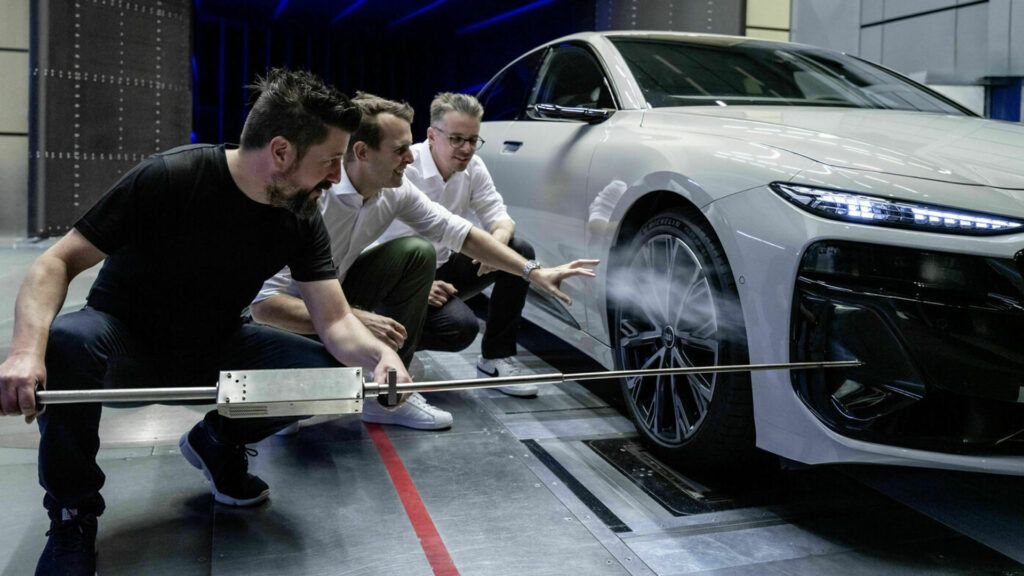
Aerodynamics developers Andreas Lauterbach and Matteo Ghelfi and wheel designer Andreas Valencia Pollex explain how they achieved the record value with meticulous attention to detail.
“Over 1,300 simulations and countless hours in the wind tunnel,” seems to be the gist of their work.
Andreas Lauterbach explains – “the basic proportions with the slim greenhouse and the sloping roofline contribute to good aerodynamics.”
“From the very start of the project, we placed a high value on efficiency and range and pursued very ambitious goals, regarding the A6 e-tron,” he adds. “To be honest, in the beginning, we weren’t sure if we would be able to achieve the values we were aiming for. Getting to that last thousandth of a Cd value is the hardest part, but in the end, we exceeded our goals.”
The record-breaking achievement was possible primarily through “excellent teamwork between us (Aerodynamics experts) and our colleagues in Design. We all pulled together. From the beginning of the project, the Designers shared their drafts with us so that we could provide initial aerodynamic evaluations. In an iterative process – firstly using virtual simulations and later the physical model in the wind tunnel – we went on to optimize the basic vehicle body,” Lauterbach explains.
Cutting through the wind
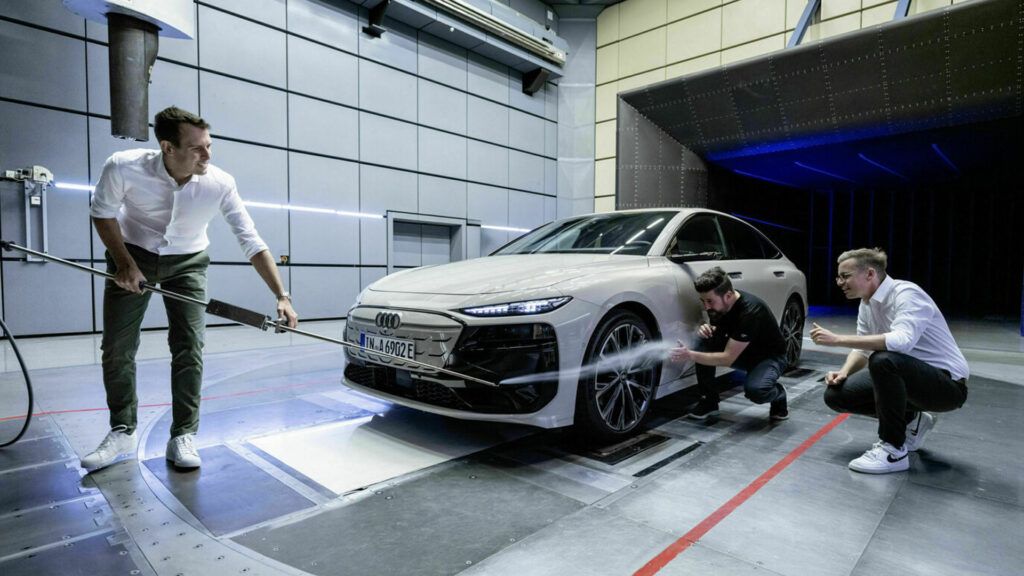
“In all, we ran over 1,300 simulations on the car and spent countless hours in the wind tunnel and in meetings collaborating with surface experts and designers,” Ghelfi says.
“For example, air curtains on the car improve the airflow around the front of the car. The outside edge of the air curtain intake protruded somewhat, which impeded the airflow. Millimetre by millimetre, we reached a compromise that ultimately worked out for both sides.”
Ghelfi further adds, “Regarding aerodynamics, the aero bezels were particularly important. The lateral breakaway edges on the rear of the A6 Avant e-tron2 made it possible to achieve a clearly defined flow stall. They are significantly larger than in other Audi cars. Working in the wind tunnel with our Design colleagues, we carefully pored over each side’s respective arguments and strived to find the best solution. The result is that the aero bezels alone improve the range by 0.008, equivalent to eight kilometres. That’s a significant advantage to come from a single design detail.”
Lauterbach shares another example with the rear track width. “Our team would have liked it to be narrower. Together, we found a solution that brought out the best in terms of design, dimensions, and aerodynamics.”
“Looking at the car overall, neither side had to make any major compromises. When all was said and done, and I called my colleague in Design to tell him that together we had achieved the Cd value of 0.21 for the A6 Sportback e-tron, he could hardly believe it,” recounts Lauterbach proudly.
Fine-tuned to the last millimetre
As one can expect, achieving these top Cd values for the A6 Sportback e-tron demanded considerable attention to detail. The switchblade cool-air intake under the Singleframe alone, which helps the air to flow around this area with few losses, realized a Cd advantage of 0.012, equivalent to about 12 kilometres.
Lauterbach says that the underfloor also plays a significant role in a car’s aerodynamic performance. “On the A6 Sportback e-tron, we added radii, optimized stiffening ribs, and breakaway edges at critical points. The rear diffuser is another element crucial to aerodynamics. Due to the smooth underfloor, this part is exposed to direct airflow, and pressure recovery has a positive effect on the Cd value.”
Ghelfi adds, “The large underfloor cover (the engine undershield) in the front of the car was optimized by adding a large radius on the air outlet; the rocker panel and the rear axle have been largely covered. These are just a few examples. We looked at practically each individual radius. We were able to achieve all these optimizations thanks to excellent teamwork with the project leaders, system team leaders, component managers, and designers.”
Lauterbach explains the overall concept this way, “the balance between the basic shape, rear height, rear contours, and underfloor design impact not only the car’s Cd value but also its lift. We achieved an ideal balance between lift and Cd by fine-tuning the underfloor as described.” Ghelfi adds, “The Avant has an additional diffuser spoiler that compensates for the fundamental difference in aerodynamics between the Sportback and Avant silhouettes, which means that the underfloor airflow differs for the two A6 e-tron derivatives. This is another reason the Avant uses wider 3D bumpers to improve airflow around the front wheels.”
Aerodynamic Wheels
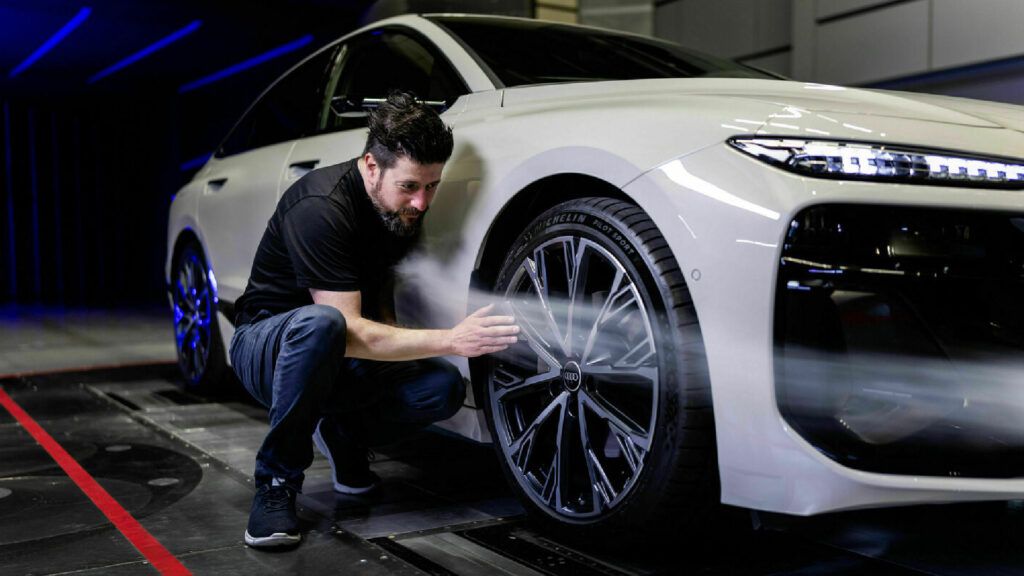
Practically all of the wheels for the A6 e-tron sport aerodynamics.
Rim designer Andreas Valencia Pollex shares some insights into the wheel designs, with respect to the vehicle’s extreme aerodynamic nature. “Formerly, wheels basically only had to meet stability requirements. Today, we develop and design intelligent aero wheels that are as efficient as possible because the wheels, and even the tyres, have a major impact on the range of an electric car.” The A6 e-tron has special 19-inch aero wheels and two special 20-inch aero wheels.
Valencia Pollex continues, “To achieve perfect aerodynamics, the rims had to be somewhat flat so that the air that hits the front of the car is directed sideways around the body without much turbulence. We want the wind to flow along a wall rather than a collection of geometric shapes. So, we also developed a 21-inch wheel with aero blades made from special plastic for the A6 e-tron.”
Lauterbach adds, “If you look at the whole range of wheels, the best and the worst wheels in terms of aerodynamics are only 0.015 Cd apart. That means that practically every wheel is designed for maximum aerodynamics.”




